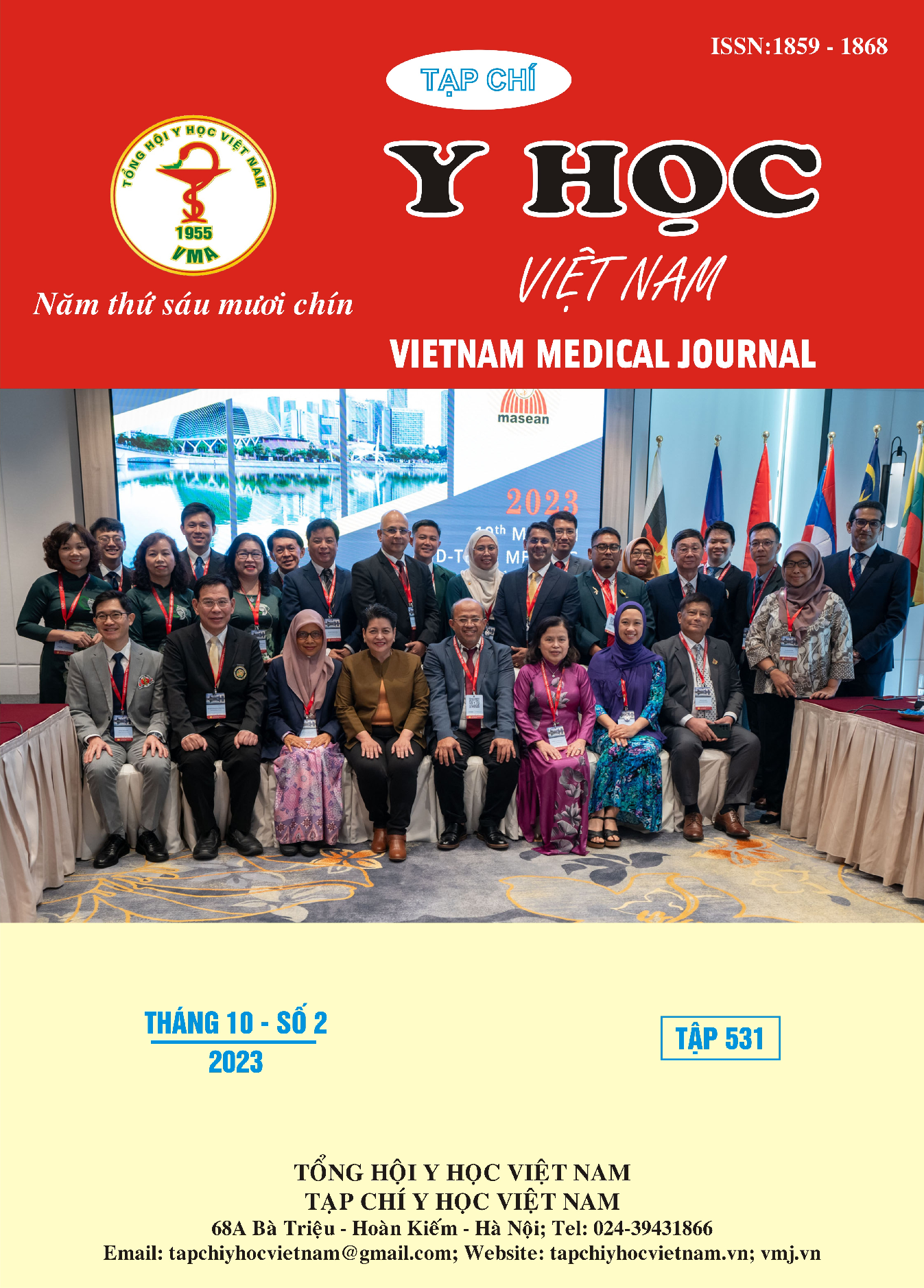THE VALUE OF INTRAOPERATIVE FROZEN SECTION FOR MARGIN TISSUE IN THE SURGICAL TREATMENT OF HYPOPHARYNGEAL CANCER
Main Article Content
Abstract
Background: Frozen section (FS) is a histopathological test that gives quick results in 10-20 minutes. FS is performed intraoperatively to help surgeons make decisions for the surgery as well as the next treatment plan. Objectives: To describe clinical and subclinical features of hypopharyngeal cancer with indications for surgery. Compare the results of FS with gross lesions to have experience in surgery. Objects and methods: The research method is a cross-sectional description. Objects include 54 patients diagnosed with hypopharyngeal cancer and operated on at the National Otolaryngology Hospital from 5/2022 to 6/2023 with preoperative biopsy results and intraoperative frozen section assessed the tumor margin area. Results: mean age 62.1 years. The most common tumor location is the pyriform sinus at 87.0%. Wart lesions 74.1%. The majority of patients come to the clinic in stages 3 and 4 with 40 cases (74.1%). Out of 209 samples for FS, there are 15 samples with positive results, accounting for 7.2%, of which the rate of FS samples in the margin region is positive in the group that has a margin region ≤ 1cm from the tumor is 11/209 samples (5.3%), the group that has a margin region at 1.2 - 1.5cm from the tumor was 4/209 (1.9%). Samples with a margin region > 1.5 cm from the tumor are all negative results. Conclusion: The most common tumor location is the pyriform sinus, and the most shape of the tumor is a wart. Histopathology is primarily a squamous cell carcinoma. Frozen section is an effective method, which plays a very important role in helping guide surgeons in surgery.
Article Details
Keywords
Frozen section, hypopharyngeal cancer
References
2. Nguyễn Đình Phúc (2009). "Tổng kết 1030 bệnh nhân của 54 năm 1955 - 2008 tại bệnh viện TMH TW". Tạp chí Y học Việt Nam, 359(2), 8-12.
3. Nguyễn Như Ước (2019). Nghiên cứu đặc điểm lâm sàng, cắt lớp vi tính và mối liên quan của một số yếu tố tiên lượng với kết quả điều trị của ung thư hạ họng. Luận văn tiến sỹ Y học, Đại học Y Hà Nội.
4. Deng X.Y, Su Y, Zheng L et al. (2009). "Regional invasion of hypopharyngeal carcinoma base on CT--a report of 65 cases". Chinese journal of cancer, 28(6), 647-651
5. Trần Phan Chung Thủy và cộng sự (2020). Vai trò của sinh thiết tức thì trong phẫu thuật laser vi phẫu qua đượng miệng điều trị ung thư thanh quản tầng thanh môn giai đoạn sớm tại BV Tai mũi họng Tp HCM.Tạp chí Tai Mũi Họng Việt Nam 65-47 (1), 21-28
6. Nguyễn Thị Huệ (2018). Đánh giá giá trị của sinh thiết tức thì vùng rìa trong phẫu thuật bảo tồn ung thư biểu mô vảy thanh quản. Luận văn thạc sỹ y học, Đại học Y Hà Nội
7. Juloori A, Koyfman SA, Geiger JL et al. (2018). "Definitive Chemoradiation in Locally Advanced Squamous Cell Carcinoma of the Hypopharynx: Long-term Outcomes and Toxicity". Anticancer Res, 38(6), 3543-3549
8. N. Matar, M. Ren=macle, M. Nollevaux et al (2008). “Reliability of flozen section analysis in transoral laser microsurgery of upper acrodigestive tract advanced malignant tumors”. Int. J. Phonosurg. Laryngol 1, 44-46
9. Ngô Thị Minh Hạnh và cộng sự (2013). Giá trị của sinh thiết cắt lạnh trong phẫu thuật. Y học TP. Hồ Chí Minh, 17(3), 101-107
10. Đ. T. Căn và CS (2001). Giá trị của chẩn đoán sinh thiết tức thì qua nghiên cứu 1917 trường hợp tại bệnh viện K Hà Nội. Y học TP. Hồ Chí Minh, 5(4), 9-13


